The word animalis is a Latin word and means ‘having breath’. It also is the origin word for animal. How can a relationship with an animal alter that ways in which we live? From a pet such as my dog Artemisia, to a horse, to a pod of dolphins; this project examines how animals communicate with us taking you on a journey through my relationships with animals who had a drastic impact on my life.
The noun from Latin animal, based on Latin animalis ‘having breath’ from anima ‘breath’; the adjective via Old French from Latin animalis.
- TitleAnimalis
- Type(s)Photography, Tapestry, Performance
- AgendaAnimal Rights
- Year(s)2021
- LocationVeneto, Italy
Animals we Love are the same as the Animals we Eat
Artemisia, my year-old Vizsla, sprawls out on a splayed cowhide. Nude, I perch on a pink swathe of suede. Many people will not purchase leather, even though they still consume meat. What they don’t realize is that leather is considered a remnant, a coproduct of the meat industry. 72 billion animals are killed worldwide every year for human consumption. Though people express misgivings over purchasing leather or fur products, few will forgo a meal with chicken, beef, or pork.
By a similar illogic, I know people who have no qualms about the ingestion of meat or animal products—yet simultaneously love their cat or dog like family. I don’t understand this disconnection between the animals that we live with and the animals that we happily consume. All are the same. I would even argue that we too are animals—or, to put it another way, that animals also have minds and souls.
This performance work challenges the viewer to acknowledge the parity between human and animal beings by drawing direct parallels between the human body and these animal hides.
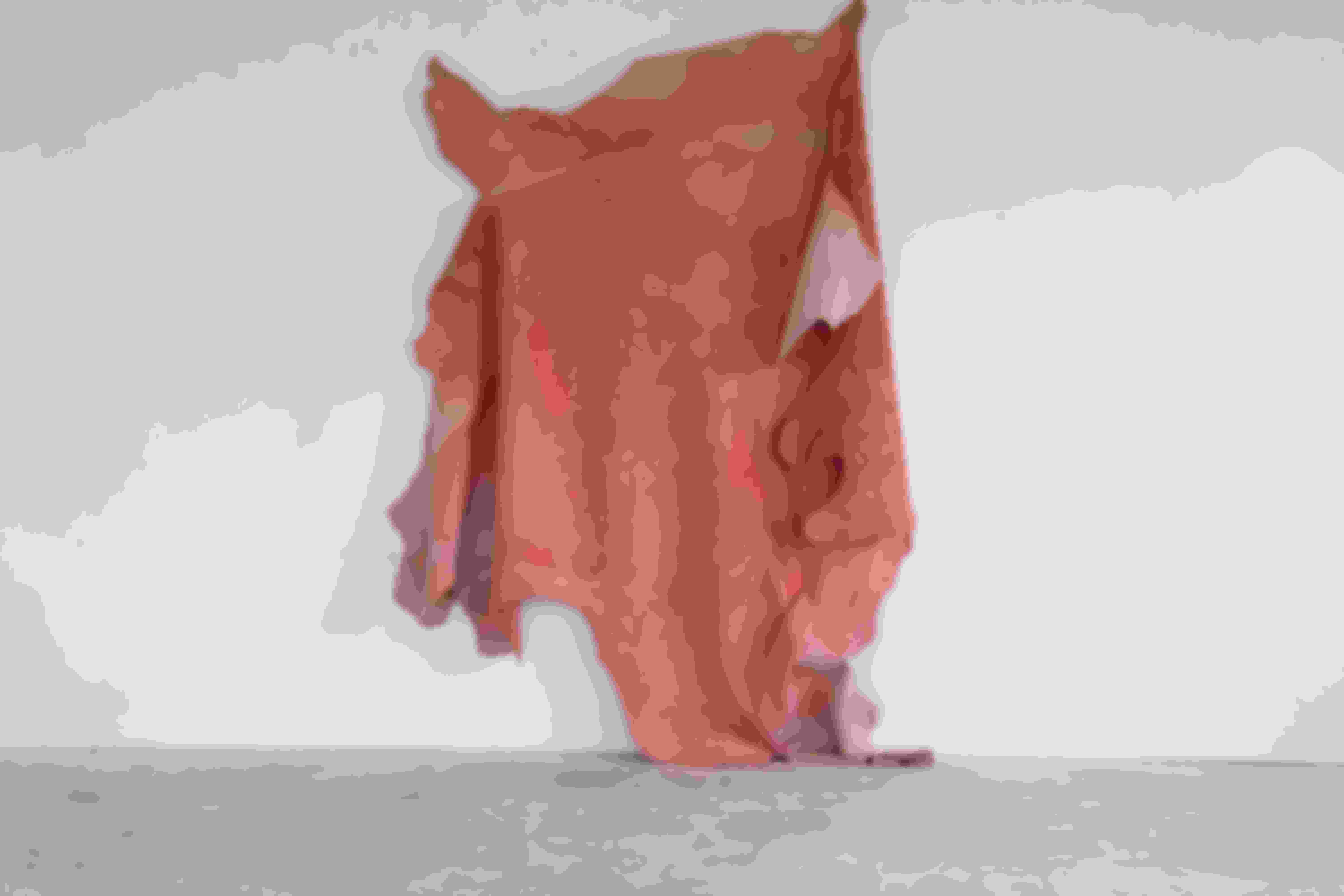

Mirroring
This tapestry artwork, crafted from discarded cashmere sourced from the Lake Como region and discarded silk from nearby Venice, speaks volumes about sustainability, conscious consumption, and the timeless value of quality craftsmanship. By repurposing luxurious materials that would otherwise go to waste, this art challenges conventional notions of consumption and underscores the importance of making mindful choices in a world driven by excess. This emphasis on quality over quantity not only elevates the aesthetic and tactile experience of your tapestries but also encourages a deeper appreciation for sustainable practices and the inherent beauty found in repurposed materials.
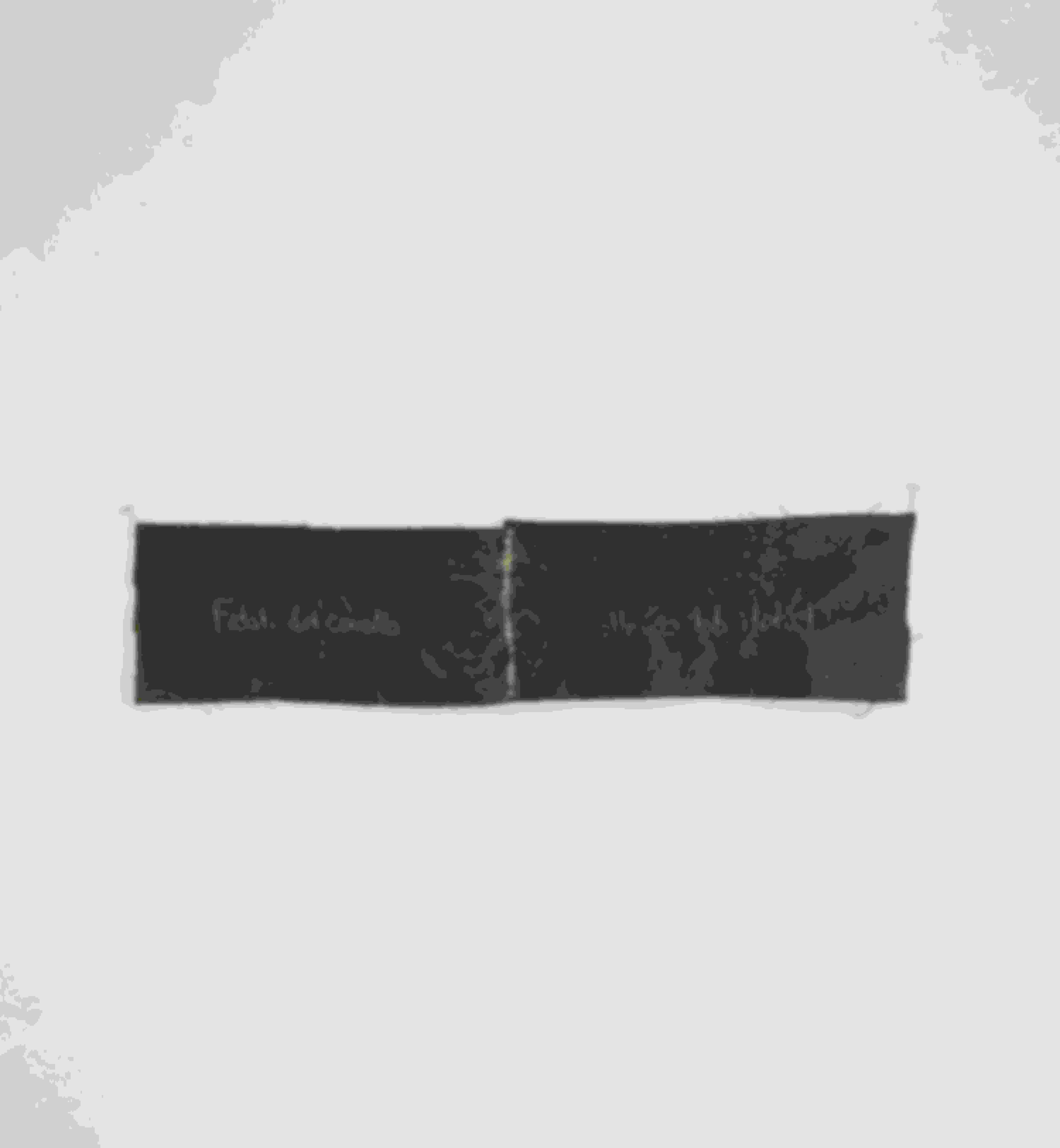
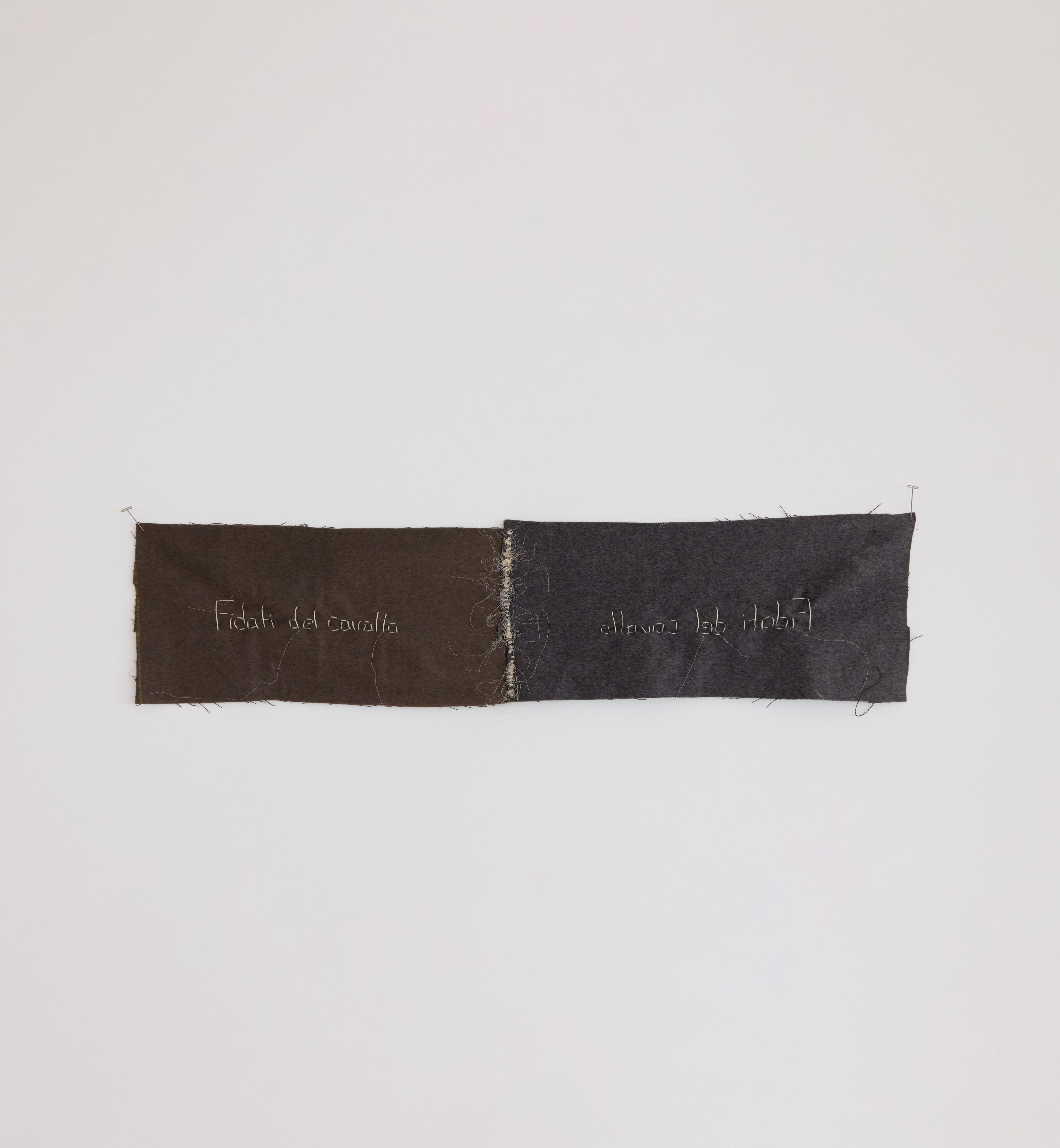
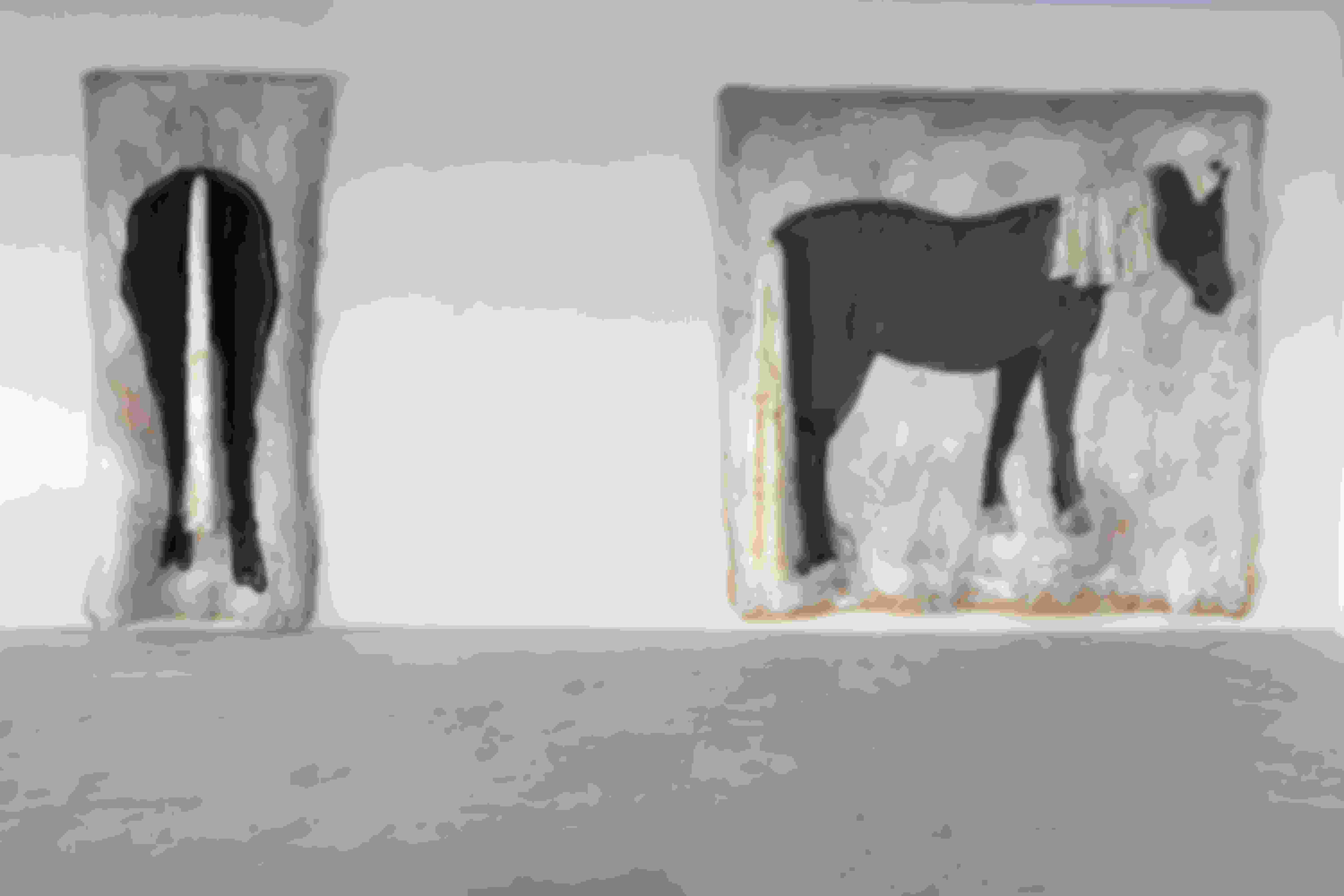
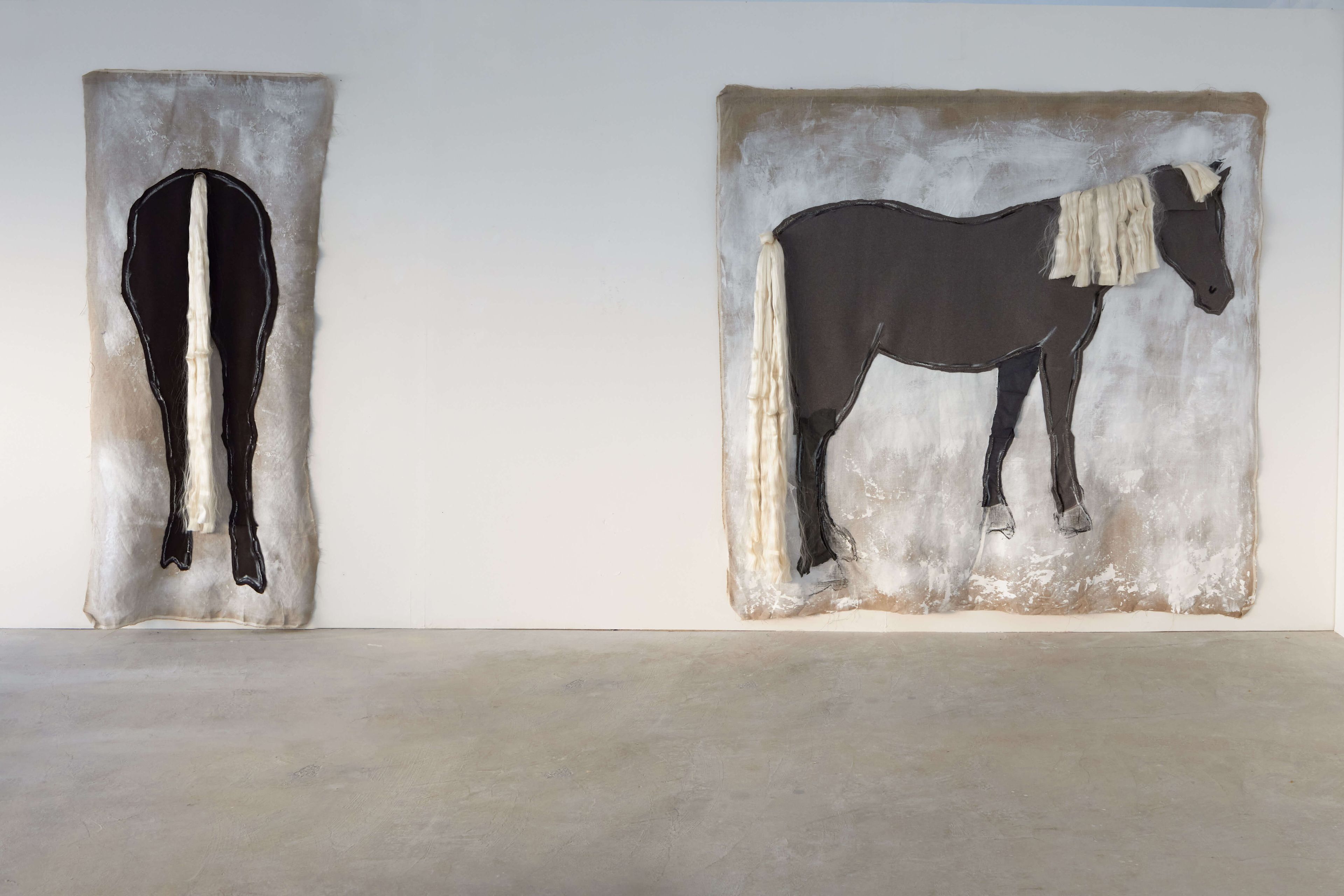
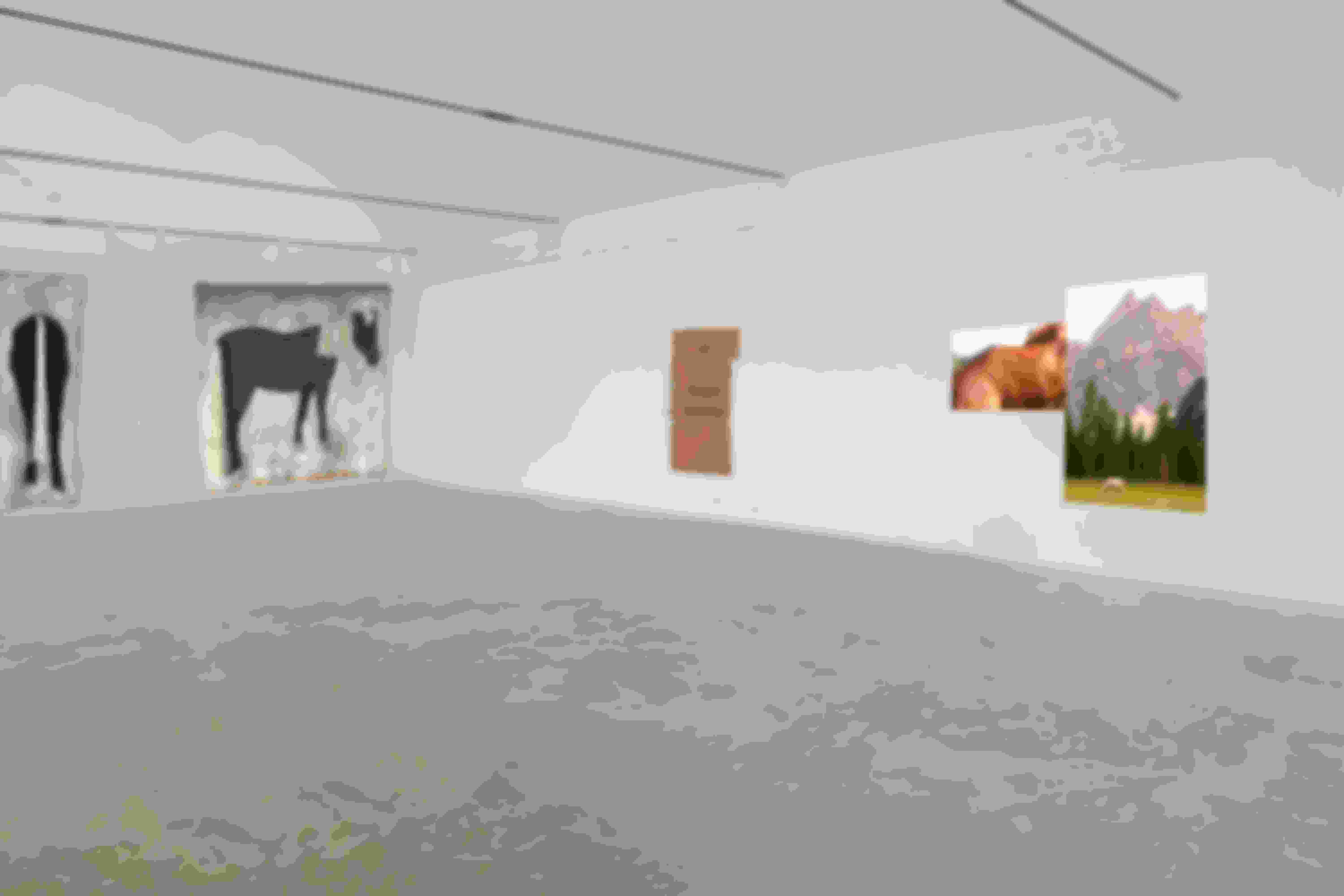
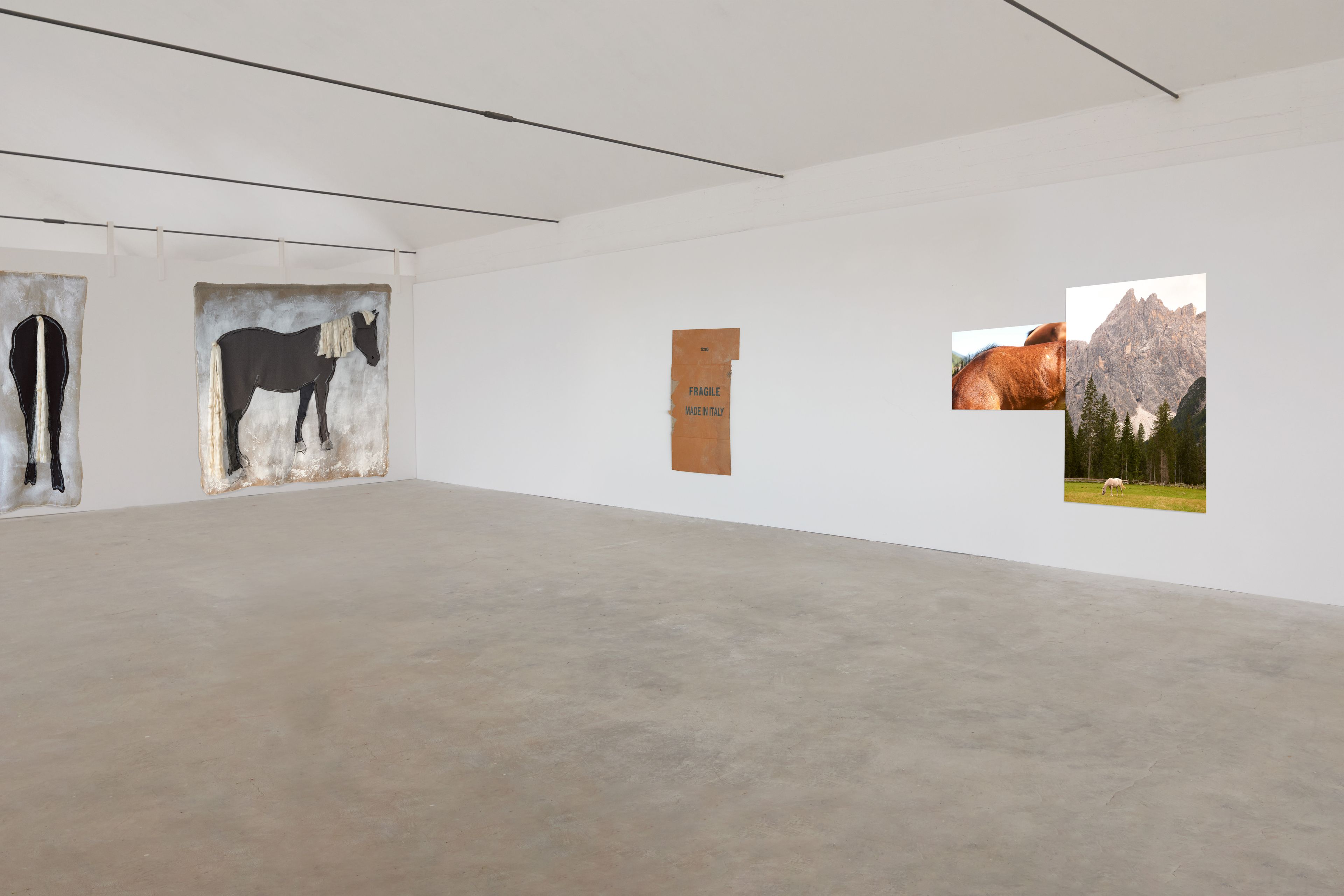
China first produced silk in 3000 BCE. Extremely light, it was easy to transport long distances, while its rich quality and high cost made it the ideal basis for monetary value, used frequently as an alternative to state-issued coinage. Journeying the 4,000 miles of the route, merchants and nomads would travel in caravans of camels and horses loaded with exotic goods.
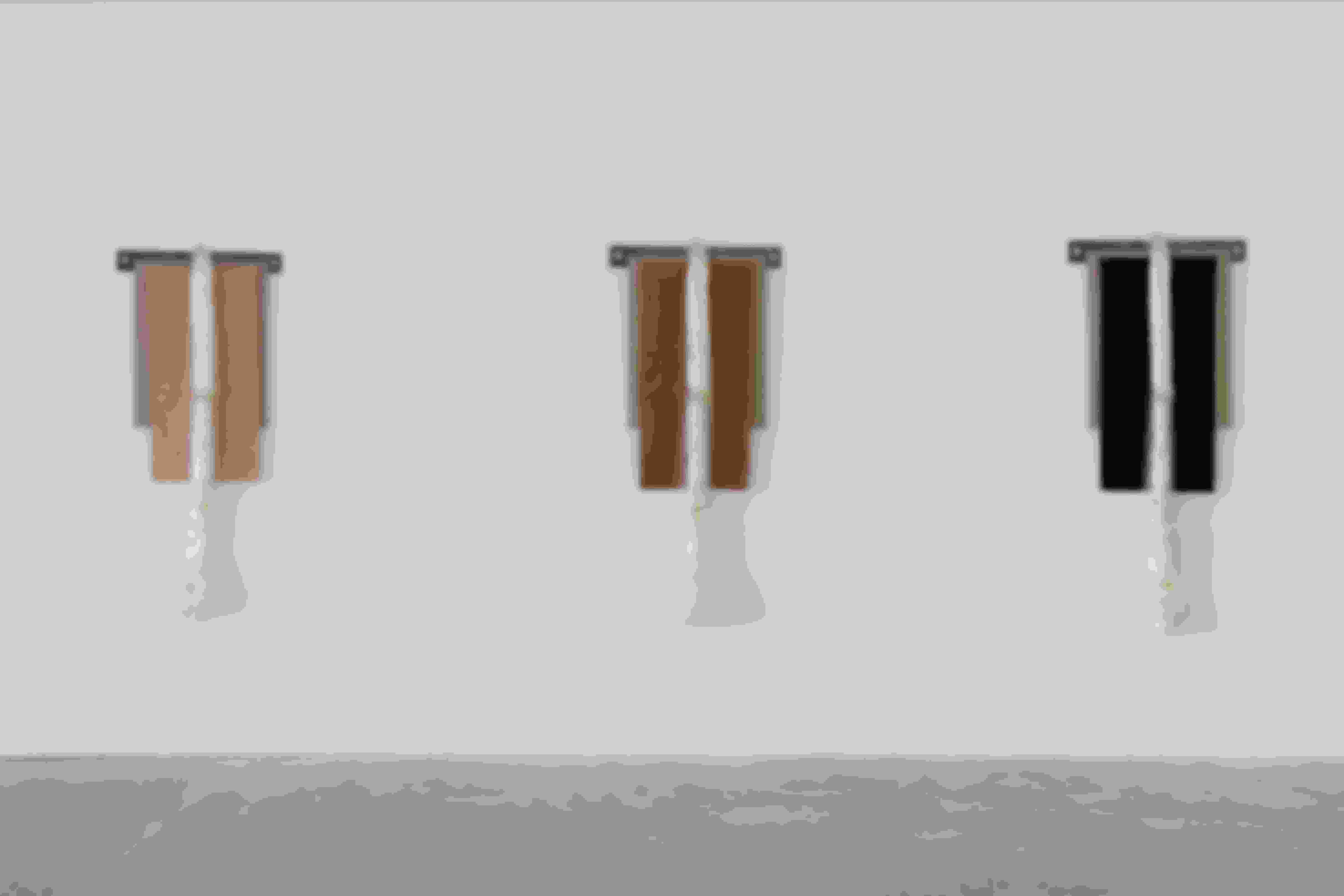

In Mirroring, I compare the cultural abundance of this historical route with our contemporary context of consumption and alienation. Placing luxurious textiles, such as cashmere and silk, in direct contrast with cardboard substrates, I simultaneously suggest the contemporary ease of exchange, while also implicating the estrangement latent in receiving commodities in a way that requires no human-to-human interaction. In the historical Silk Road, the flow of products was fundamentally linked to the movement of people. In today’s post-Fordist society, trade does not facilitate the expansion of mutual understanding by diverse peoples, merely the codependence and empowerment of nations vying for dominance.The market is merely capital without social benefit.
In this series of works, the cloth shapes take on the forms of horses. On the Silk Road, textiles could buy traders well-bred Mongolian or Tibetan horses—first domesticated circa 3700 BCE in Central Asia—which were so essential to traversing the long path from East to West. As herbivores that were historically preyed upon by humans, mountain lions, wild dogs, and bears, horses intuitively read and respond to the embodied, nonverbal cues of other animals in their environment. Horses readily match human emotions and, in so doing, can offer a rider insight into her own emotional state. It is often said that the horse becomes a mirror of the rider, the unconscious mind exposed through the horse’s behavior. I understand consumption today as an undiagnosed attempt to fill the void created by contemporary isolation. We seek happiness in material goods rather than in relationships, actions, or personal growth. However, the means by which we receive these objects—without needing to enter a space of encounter, delivered anonymously to our doorsteps—merely exacerbates the problem. As included in these works, the form of the horses is intended to prompt circumspection and self-reflection, considering the origins of our current market and envisioning what a better future would entail.
Title: Exploring Dimensions: The Intersection of Charcoal and Ceramic in Wall Art
In the realm of artistic expression, boundaries between dimensions blur, giving rise to captivating creations that challenge our perceptions and spark introspection. Such is the case with a unique wall artwork that seamlessly merges charcoal sketches with ceramic elements, inviting viewers into a world where two and three dimensions converge in a dance of illusion and self-discovery.
At first glance, the artwork appears as a life-sized horse sketched in intricate detail on the wall. The use of charcoal brings depth and texture to the equine form, capturing the essence of movement and grace. Yet, upon closer inspection, the artwork reveals its multidimensional nature. Ceramic hoofs, meticulously crafted to mimic the size and shape of a real horse's hoofs, rest on the floor below the sketch. This juxtaposition creates a dynamic interplay between the flatness of the wall and the tangible presence of the ceramic elements, blurring the lines between what is purely visual and what extends into physical space.
The artist's inspiration for this piece stemmed from a deep connection with a real horse, measuring and studying its proportions to authentically recreate its essence on a larger scale. This act of measurement and mimicry not only pays homage to the majestic creature but also delves into themes of perception and self-awareness. By contemplating the illusion of depth created by the charcoal sketch and the tangible reality of the ceramic hoofs, viewers are prompted to ponder their own perceptions of reality and the layers of meaning that underlie our understanding of the world.
Moreover, the artwork invites contemplation on the complexities of the psyche. Just as the artwork blurs the lines between dimensions, it also encourages introspection into the layers of thoughts, emotions, and experiences that shape our inner landscapes. The horse, a symbol of strength and freedom, becomes a metaphorical guide on a journey of self-discovery and understanding.
In essence, this wall artwork transcends mere visual aesthetics to become a catalyst for contemplation and exploration. It challenges viewers to question their perceptions, contemplate the nature of illusions, and delve into the depths of their own psyche. Through the harmonious blend of charcoal and ceramic, dimensions converge, inviting us to seek meaning beyond the surface and discover the interconnectedness of art, perception, and self-awareness.
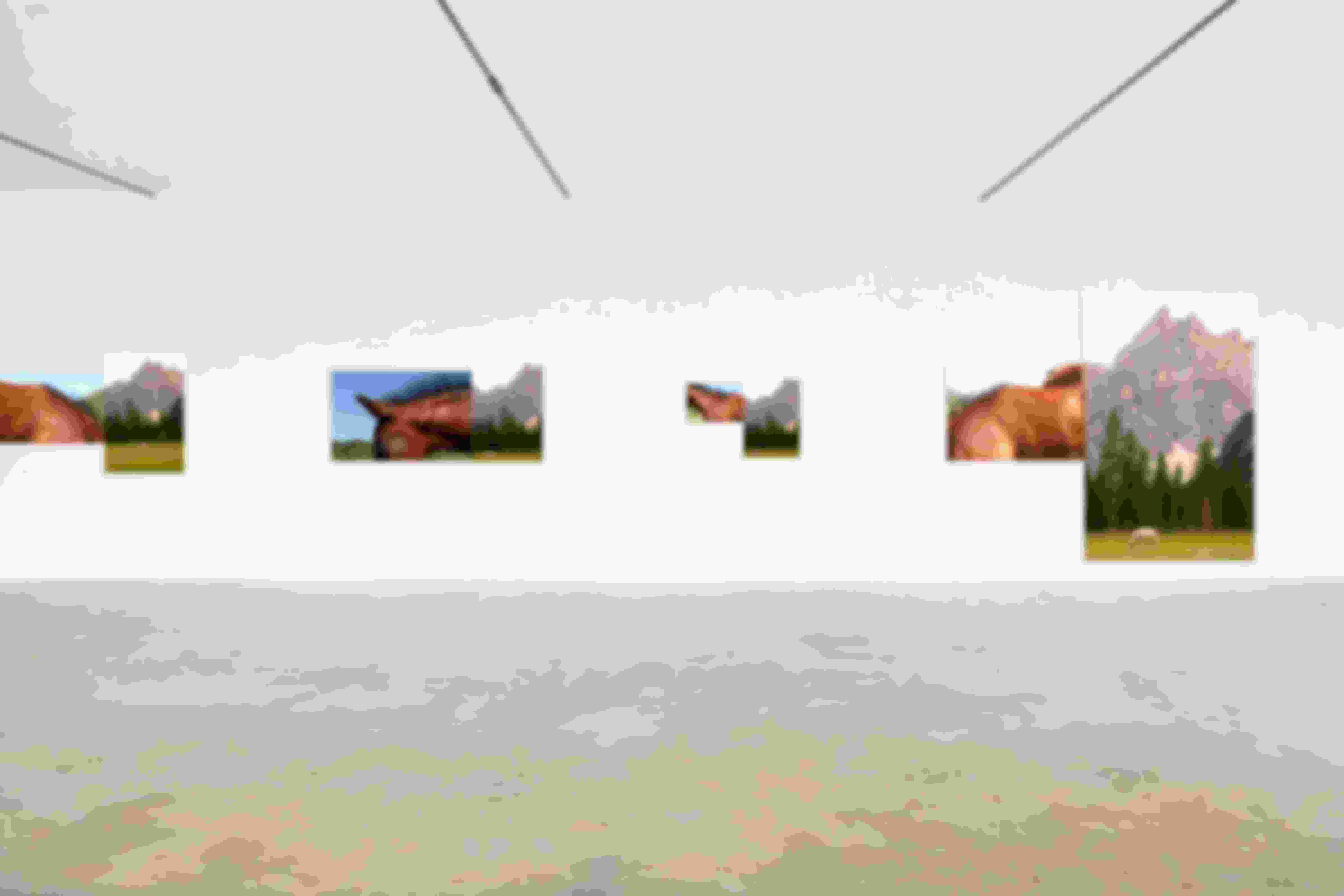
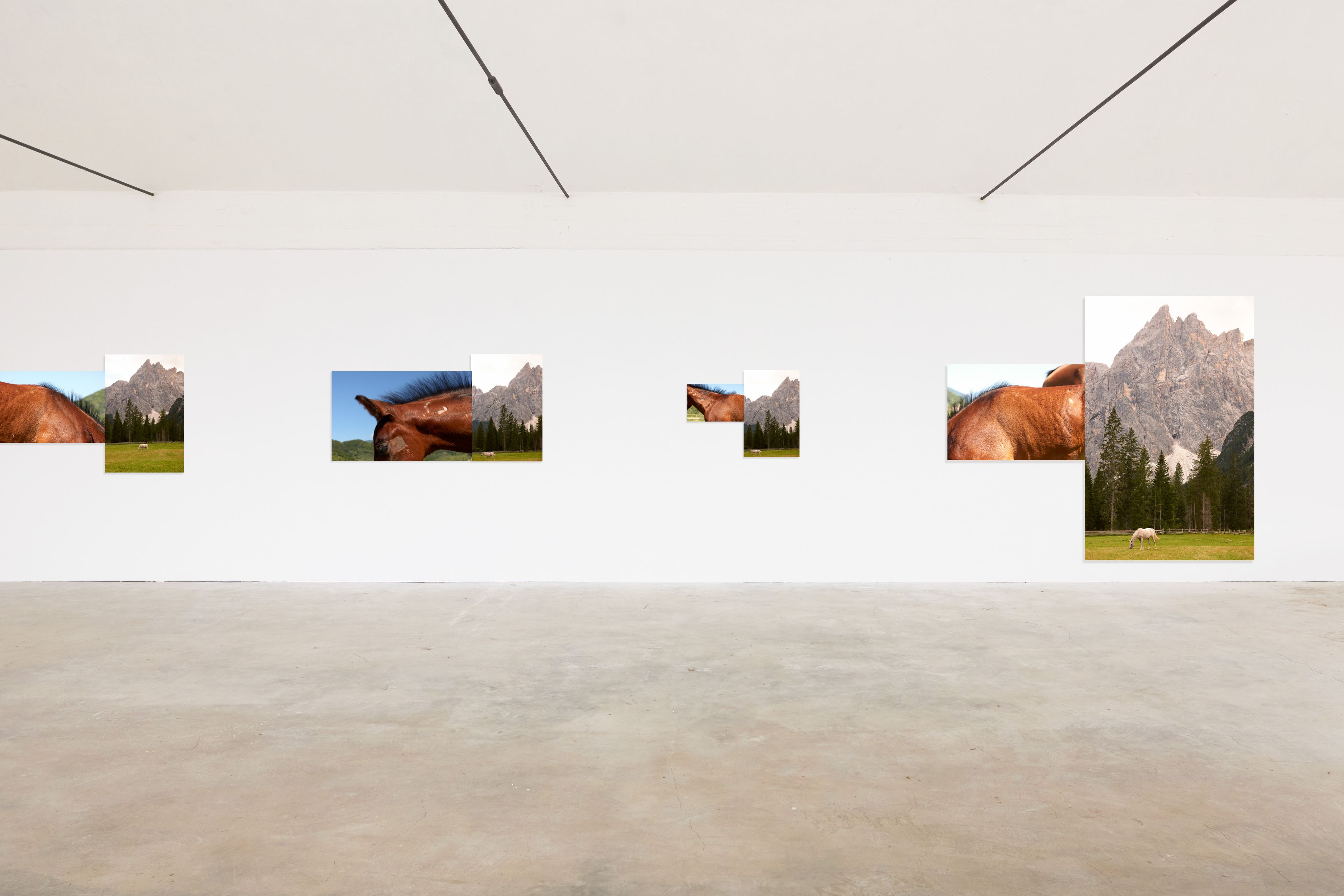
Equine Insights
Capturing the Essence of Horse Therapy Through Photography
Photography has a remarkable ability to capture moments of introspection and connection, revealing insights that transcend words. In a captivating project that intertwines the beauty of horses with the grandeur of the Dolomites, a photographer delves into the transformative power of horse therapy and the profound lessons learned from these majestic animals.
The project unfolds as a visual narrative, pairing images of horses' bodies with the breathtaking landscapes of the Dolomites, a region that holds personal significance for the photographer. Having resided in this scenic locale and immersed in riding classes, the photographer discovered a deeper resonance with equine companionship—a journey that led to self-discovery and valuable life lessons.
At the heart of this project is the concept of horse therapy, a form of experiential therapy that harnesses the innate sensitivity and communication skills of horses to facilitate personal growth and healing. Horses, with their ability to mirror human emotions and energy, serve as powerful catalysts for self-awareness and emotional exploration.
Through the lens of the camera, the photographer captures moments where the horses' presence and expressions mirror aspects of human experiences. The gentle curve of a horse's neck echoes feelings of grace and resilience, while the intensity in their eyes reflects depths of emotion and connection. Paired with the towering mountains of the Dolomites, these images evoke a sense of harmony and interconnectedness between nature and human psyche.
The project not only showcases the beauty of equine companionship but also highlights the importance of relationships with animals in fostering emotional well-being. Horses, as sentient beings, possess a unique ability to communicate nonverbally and establish profound connections with humans. This communication extends beyond words, delving into realms of empathy, trust, and mutual understanding.
As the photographer reflects on their own experiences in riding classes, they recount the invaluable life lessons learned from these magnificent animals. Horses teach us about the power of presence, mindfulness, and authentic communication. They remind us of the importance of building trust-based relationships and listening to subtle cues in our interactions.
Moreover, the project serves as a tribute to the interconnectedness of all living beings within the natural world. The synergy between horses and their environment—the mountains, the sky, and the earth—serves as a poignant reminder of our shared journey on this planet and the need for harmony and respect in our relationships with both animals and nature.
In conclusion, this photography project not only captures the visual beauty of horses and the Dolomites but also delves into the deeper layers of human-animal connections and the transformative impact of horse therapy. Through these images, viewers are invited to contemplate the wisdom and insights that horses offer, inspiring a deeper appreciation for the interconnected tapestry of life and the profound lessons that nature continues to impart upon us.


All is born in the Alboran Sea (in progress)
This art project on wild dolphins is a captivating exploration of both their natural habitat and their intricate communication methods. Through a combination of video footage and small watercolor paintings created with sea water, I immerse viewers in the beauty and mystery of the dolphins' world. The video component showcases my personal journey of overcoming fears by diving into the deep sea to encounter these majestic creatures firsthand. This experience not only allows me to witness their communication methods but also serves as a poignant reminder of the urgent need to protect their marine environment. By becoming a voice for change in advocating for cleaner waters, I highlight the devastating impact of human activities on their habitat, amplifying the message that they cannot express in words. Through my project, I shed light on the Alboran Sea's significance as a vital ecosystem for dolphins and other marine life, emphasizing the importance of conservation efforts to preserve these intelligent and socially intricate beings.

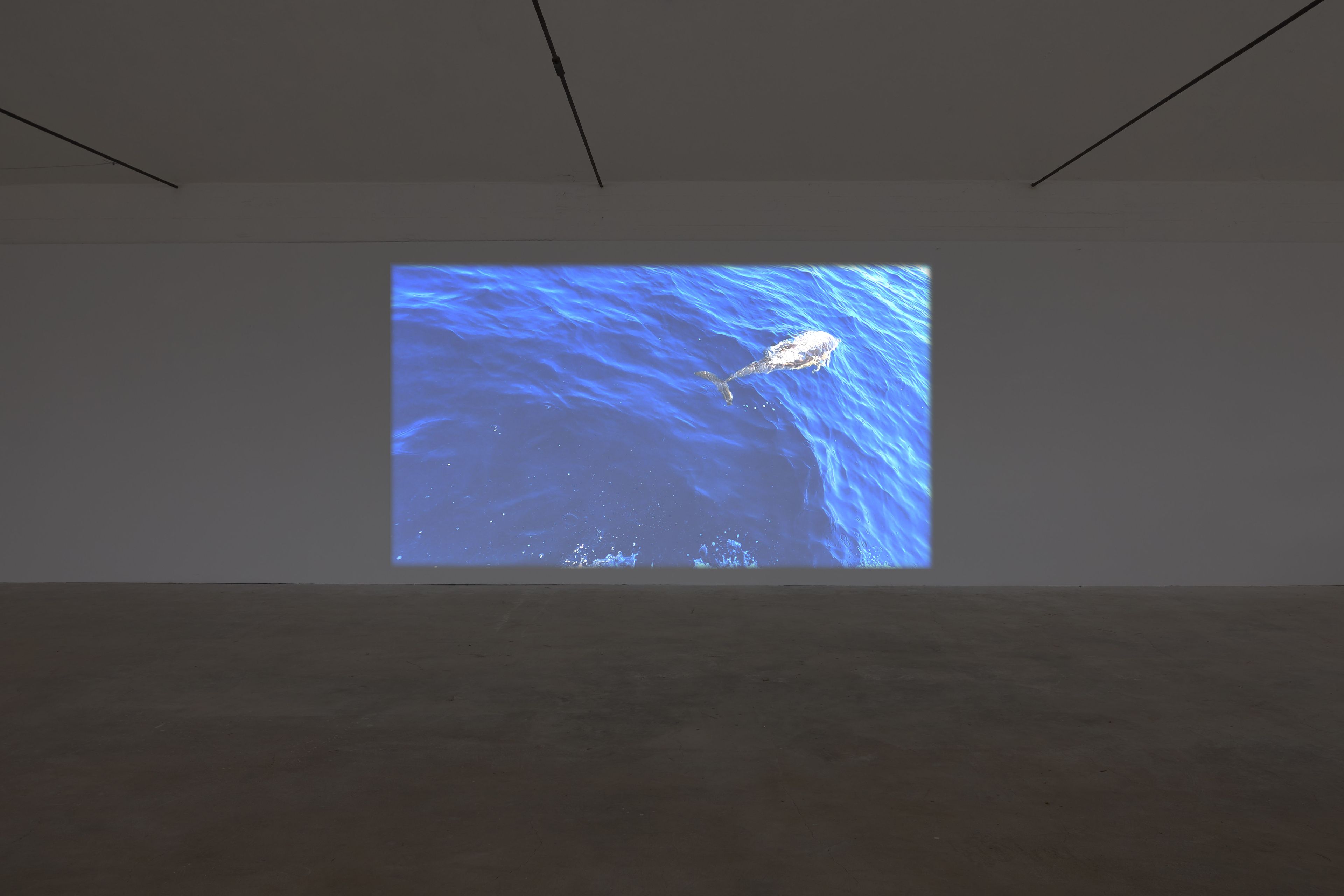
The Alboran sea is located between the continents of Africa, Morocco, and Spain. It joins the Mediterranean and Atlantic Oceans via the Strait of Gibraltar. It is home to many species including dolphins. Tightly bound to their pods, these large brained and highly social mammals we call dolphins (word originating from ‘delpus’ which is the Greek word for womb) use both verbal and nonverbal gestures to communicate with each other. With their high frequency hearing they communicate with whistles, clicks, and loud broadband packets of sound called burst pulses. It is believed that they have a complex system of communication, even better than how humans communicate. Considered to be the world’s most intelligent marine mammals, it is believed that there is a far deeper interconnectedness throughout dolphins and their pod then humans and our social groups.
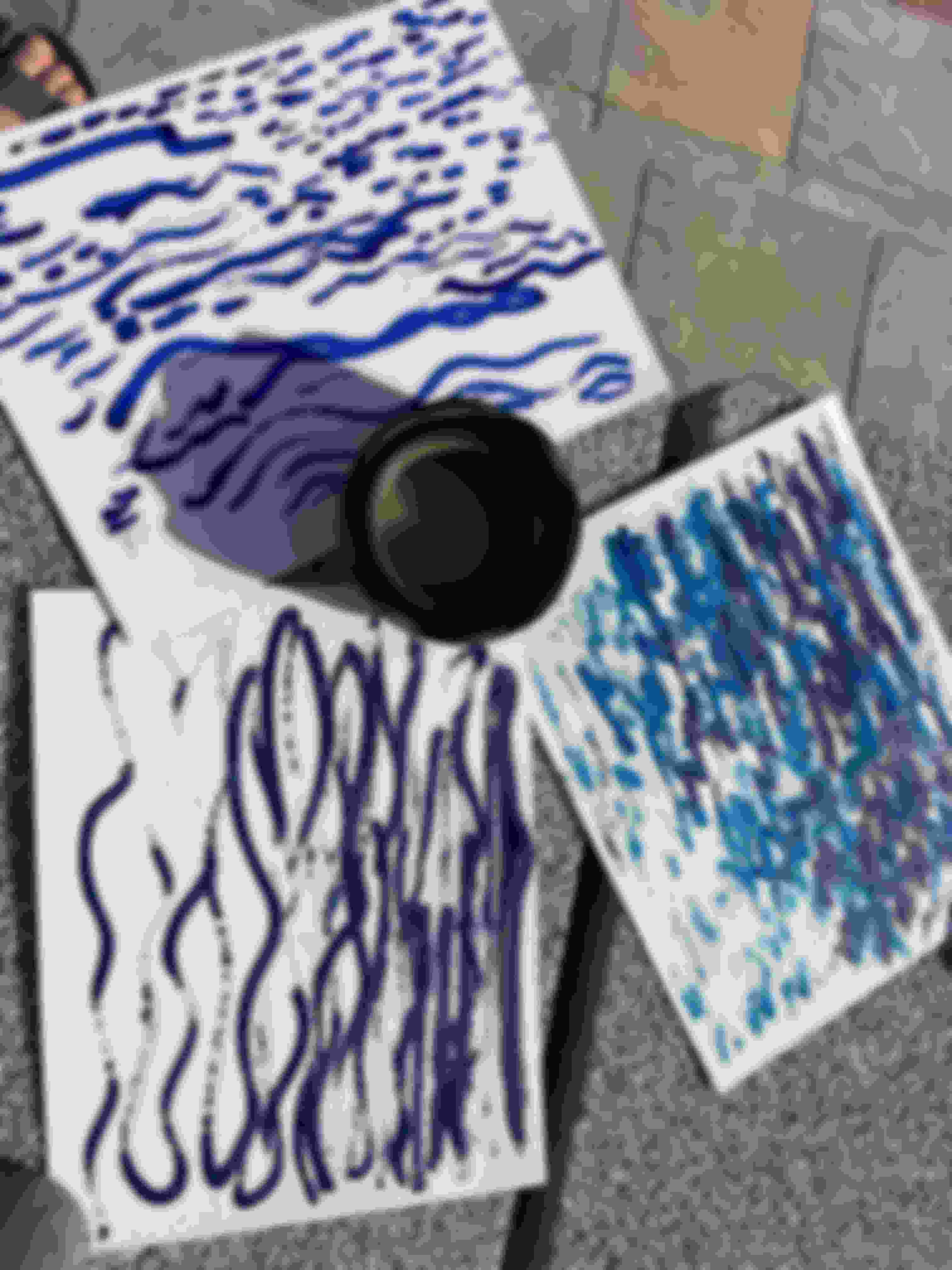
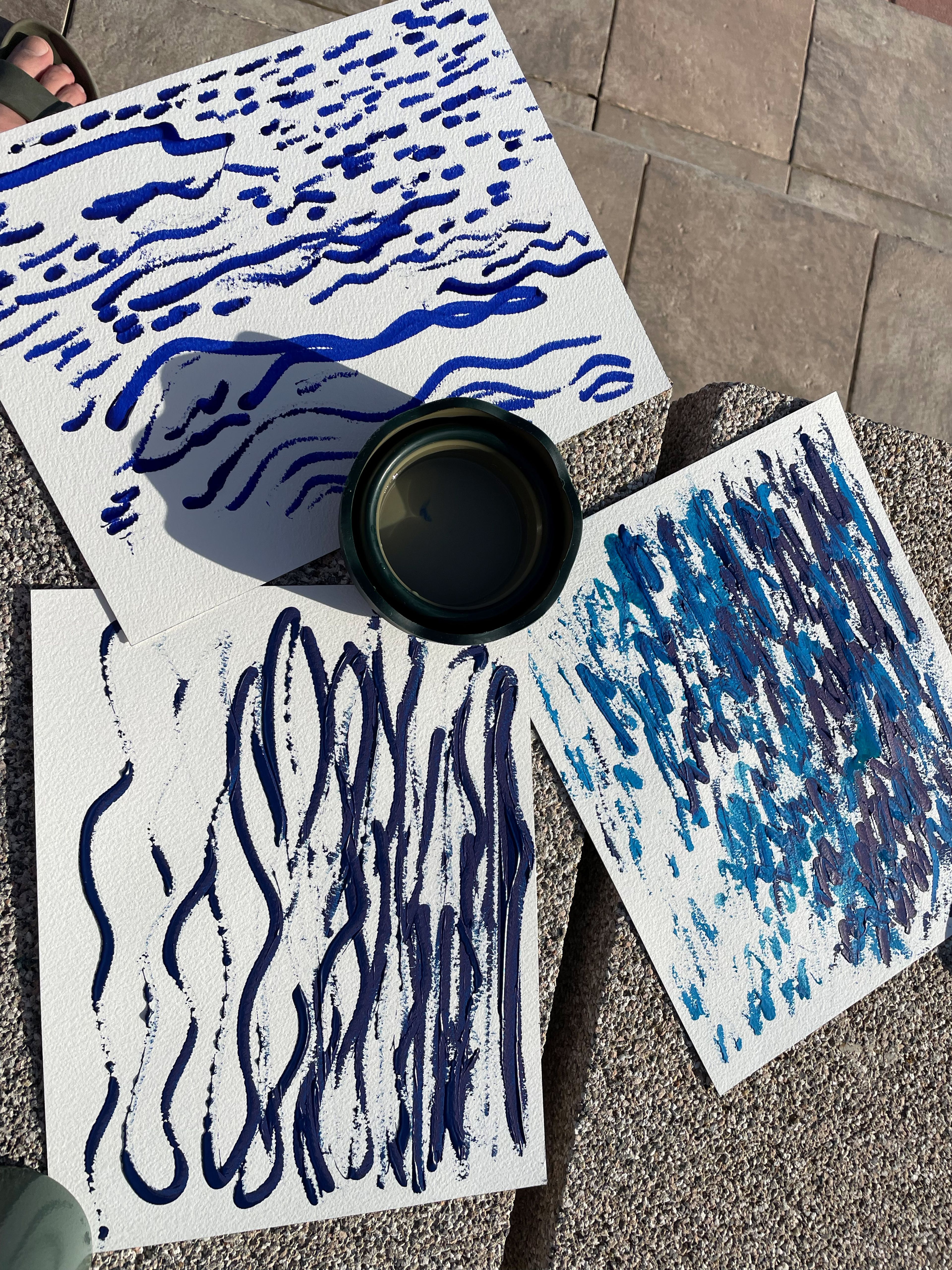
Title: Sea-Watercolor
Medium: Watercolor and gouache
Excerpt from journal entry, July 2022:
I swam with a family of wild dolphins in the Alboran sea. It was the summer of 2022.
I found a posting on a website stating a boat, which is called the Akun is sailing across the Alboran sea. The captain is Israel Lopez Gonzalez. The post stated that they were sailing from Garrucha, Spain to Melilla (which is beside Morocco). The total trip was four days.
On our way to Melilla we saw dolphins and a sperm whale, but it was on our way back to Spain where I experienced swimming with them.
It was June 30th around 10am in the morning and a pod of dolphins jumping and swimming fast seemed to come directly to our boat. I have had the desire to meet dolphins for some time now, and right after I reminded the captain that if we see dolphins again I want to swim with them, it was then that Maria, the girlfriend of the captain, looked up and yelled, ‘they are coming.’
I saw a pod of approximately twenty dolphins coming directly to us. My instincts said to jump off the boat, and so I quickly took off my sweater and pants that held back the morning chill, and jumped into the cool blue sea.
The captain and skipper on the boat tried to stop it as soon as they could but the boat was still quite far away, too far for me to swim to. One called out ‘grab the invisible fishing line’ -- and so I did. I felt more safe knowing I had some connection to the boat as I seemed to not really realize how this leap into the sea would make me feel.
The dolphins weren’t around when I first jumped, but enormous seagulls were and they flew to my head thinking that I was some sort of food. Once I managed to get closer to the boat was when the family of dolphins reappeared, swimming all around me. I saw mothers and babies, I saw groups of dolphins swimming together so in sync that it looked like a performance, one dolphins in particular stayed quite close to me for some time. I made eye contact with them, I heard them echo and the whole sea seem to vibrate. I told them that I will be back soon to visit. It was an experience that I will never forget, the connection and ways we seemed to telepathically communicate.


This project is currently in progress. For more information, please contact the studio.